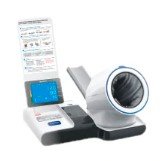Ensuring FDA Approval for Chinese Phlebotomy Supplies for Patient Safety and Quality Assurance
Summary
- Chinese phlebotomy supplies manufacturers have begun to seek FDA approval for their products in the United States.
- The process of obtaining FDA approval for medical devices can be lengthy and complex.
- Ensuring that phlebotomy supplies meet FDA standards is crucial for patient safety and quality assurance in medical labs.
Introduction
Phlebotomy is a crucial aspect of medical laboratory testing, requiring skilled professionals and high-quality supplies to ensure accurate results and patient safety. With the rise of globalization, many manufacturers of medical supplies, including phlebotomy supplies, are based in countries such as China. However, a key question arises - have Chinese phlebotomy supplies manufacturers obtained FDA approval for their products in the United States?
Understanding FDA Approval for Medical Devices
In the United States, the Food and Drug Administration (FDA) is responsible for regulating and approving medical devices, including phlebotomy supplies. FDA approval ensures that medical devices meet the necessary standards for safety and effectiveness before they can be marketed and used in healthcare settings.
The Process of Obtaining FDA Approval
Obtaining FDA approval for medical devices, including phlebotomy supplies, is a complex and lengthy process. Manufacturers must submit detailed information about their products, including design specifications, manufacturing processes, and clinical data demonstrating safety and efficacy.
Regulatory Pathways for FDA Approval
There are different regulatory pathways for FDA approval of medical devices, depending on the level of risk associated with the device. Phlebotomy supplies are classified as moderate-risk (Class II) devices, which typically require premarket notification (510(k)) to demonstrate substantial equivalence to a legally marketed device.
- Preclinical testing: Manufacturers must conduct preclinical testing to assess the safety and performance of their phlebotomy supplies.
- Clinical trials: In some cases, manufacturers may need to conduct clinical trials to provide evidence of the device's safety and efficacy.
- Quality system requirements: Manufacturers must comply with FDA's quality system Regulations, which outline requirements for design controls, quality management, and postmarket surveillance.
Challenges for Chinese Phlebotomy Supplies Manufacturers
For Chinese phlebotomy supplies manufacturers, obtaining FDA approval for their products in the United States poses several challenges:
Language and Cultural Barriers
Language and cultural barriers can make it difficult for Chinese manufacturers to navigate the FDA approval process, which requires submitting detailed documentation in English and understanding U.S. regulatory requirements.
Differences in Regulatory Standards
Chinese manufacturers must ensure that their phlebotomy supplies meet FDA standards, which may differ from those in China. This requires significant investment in Quality Control and regulatory compliance.
Competition and Market Access
The U.S. market for medical devices is highly competitive, and Chinese manufacturers must demonstrate the quality and reliability of their phlebotomy supplies to gain market access and compete with established brands.
Importance of FDA Approval for Phlebotomy Supplies
Ensuring that phlebotomy supplies meet FDA standards is crucial for patient safety and quality assurance in medical labs. FDA approval provides assurance that the products are manufactured according to strict Quality Standards and have been tested for safety and efficacy.
Patient Safety
Using FDA-approved phlebotomy supplies helps to ensure the safety of patients undergoing blood tests and other medical procedures. Quality supplies reduce the risk of contamination, infection, and other adverse events.
Quality Assurance
FDA approval serves as a stamp of quality assurance, indicating that phlebotomy supplies meet the necessary standards for performance and reliability. This gives Healthcare Providers and patients confidence in the products they are using.
Legal and Regulatory Compliance
By obtaining FDA approval for their phlebotomy supplies, manufacturers demonstrate their commitment to legal and regulatory compliance. This helps to mitigate risks and protect against potential liability issues.
Conclusion
Chinese phlebotomy supplies manufacturers are increasingly seeking FDA approval for their products in the United States to ensure patient safety and quality assurance in medical labs. While the process of obtaining FDA approval can be challenging, it is essential for manufacturers to comply with regulatory standards and demonstrate the safety and effectiveness of their products. By meeting FDA requirements, Chinese manufacturers can gain access to the U.S. market and compete effectively with established brands in the phlebotomy supplies industry.

Disclaimer: The content provided on this blog is for informational purposes only, reflecting the personal opinions and insights of the author(s) on the topics. The information provided should not be used for diagnosing or treating a health problem or disease, and those seeking personal medical advice should consult with a licensed physician. Always seek the advice of your doctor or other qualified health provider regarding a medical condition. Never disregard professional medical advice or delay in seeking it because of something you have read on this website. If you think you may have a medical emergency, call 911 or go to the nearest emergency room immediately. No physician-patient relationship is created by this web site or its use. No contributors to this web site make any representations, express or implied, with respect to the information provided herein or to its use. While we strive to share accurate and up-to-date information, we cannot guarantee the completeness, reliability, or accuracy of the content. The blog may also include links to external websites and resources for the convenience of our readers. Please note that linking to other sites does not imply endorsement of their content, practices, or services by us. Readers should use their discretion and judgment while exploring any external links and resources mentioned on this blog.
